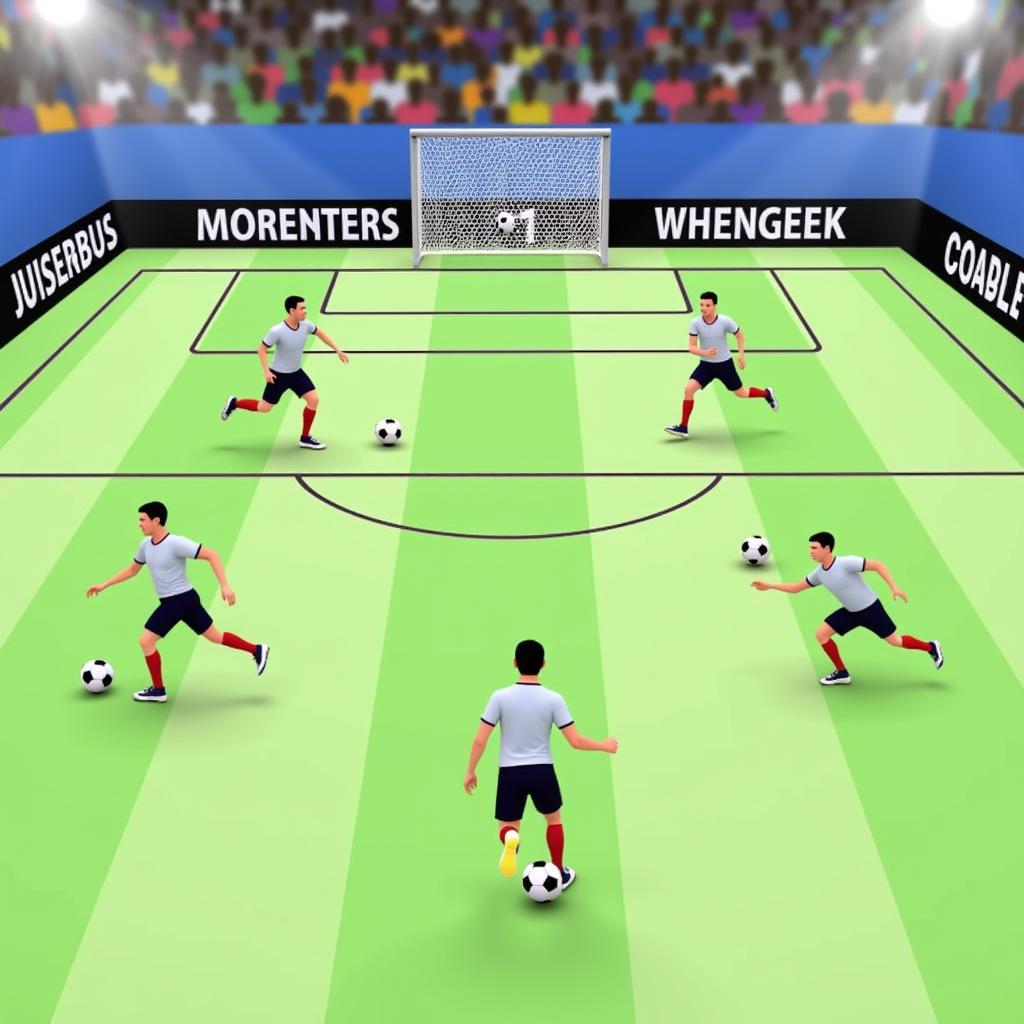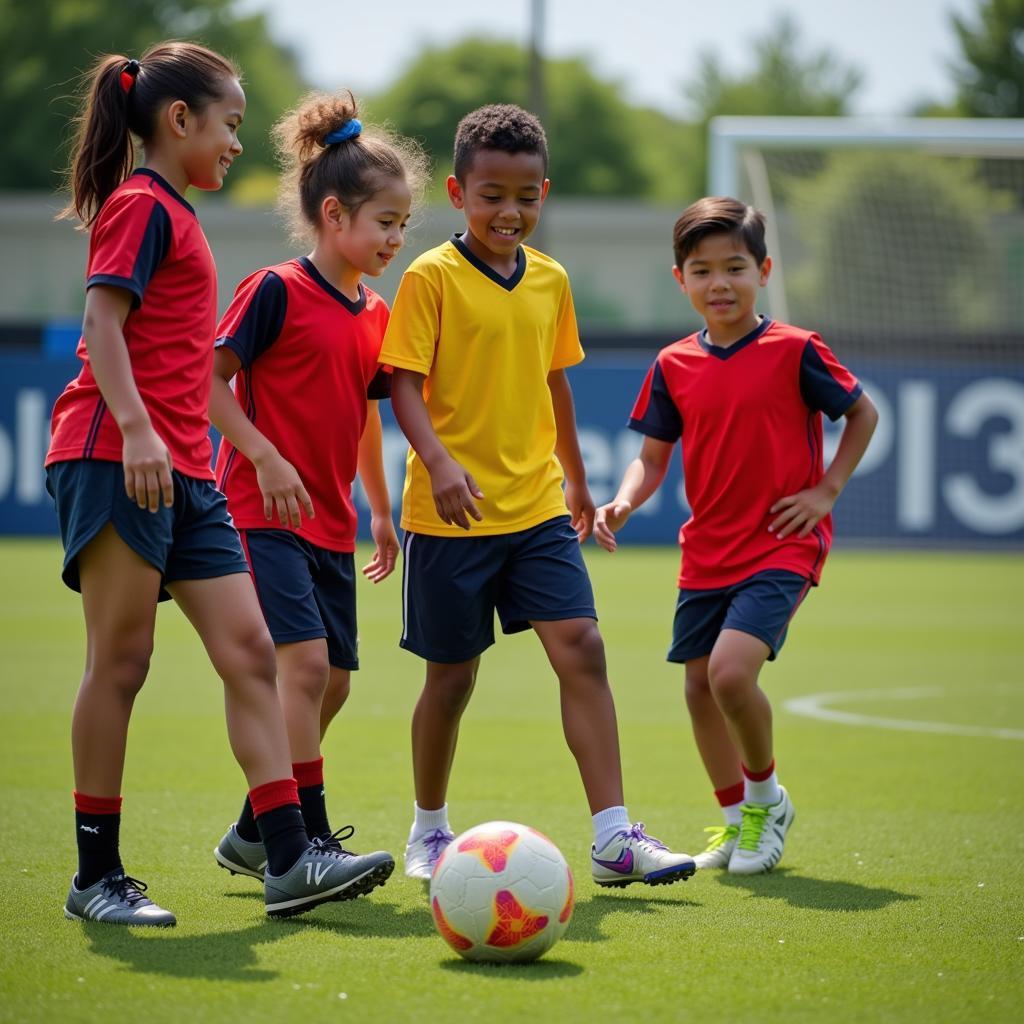Not Enough Players for the World Cup? Exploring the Challenges
November 11, 2024The phrase “not enough players for the World Cup” might seem counterintuitive, given the global passion for football. However, several factors can contribute to this perceived shortage at various levels, from grassroots development to national team selection. This article delves into these complexities, examining the challenges faced by teams worldwide.
The Complexities of Player Availability for the World Cup
Several underlying issues contribute to the perceived lack of suitable players for the World Cup. These challenges span across various levels, from youth development programs to the demands of elite international competition.
The Pipeline Problem: Youth Development and Talent Identification
One critical factor is the robustness of youth development programs. Are enough young players being encouraged and supported to reach their full potential? Effective talent identification and nurturing are essential to build a strong player pool. This requires investment in coaching, facilities, and scouting networks. Inconsistencies in youth development contribute significantly to the perceived player shortage, especially in less developed footballing nations.
Injury Woes and Player Burnout: The Physical Demands of Modern Football
The modern game demands an incredible level of physical exertion from players. This increased intensity leads to a higher risk of injuries and burnout, particularly during a demanding season culminating in a major tournament like the World Cup. Maintaining player fitness and managing workload effectively becomes crucial for teams aiming for success.
The toll taken by injuries and the packed football calendar can significantly deplete a nation’s available talent pool. Strategies for injury prevention and recovery are paramount.
Specialization vs. Versatility: Finding the Right Balance
The trend towards early specialization in specific positions can also limit the overall versatility of players. While specialization can hone specific skills, it might hinder a player’s ability to adapt to different roles and tactical systems. This can impact a national team manager’s selection options, particularly when faced with injuries or suspensions during the World Cup. Finding the right balance between specialization and versatility is crucial for player development.
 Football Player Versatility and Tactical Flexibility in the World Cup
Football Player Versatility and Tactical Flexibility in the World Cup
The Global Landscape: Competition and Player Migration
The global nature of football means that nations are competing for talent. Player migration and eligibility rules can impact the availability of players for certain national teams. Some countries might struggle to retain their best talent, while others benefit from attracting players with dual nationalities.
Addressing the “Not Enough Players” Challenge
So, what can be done to address the perceived shortage of players capable of competing at the World Cup level? Several key strategies can contribute to a more robust and sustainable player pool.
Investing in Grassroots Football: The Foundation for Future Success
Long-term solutions lie in investing in grassroots football. This involves creating accessible opportunities for children to play the game, developing qualified coaches, and establishing robust talent identification pathways.
Prioritizing Player Welfare: Managing Workload and Preventing Injuries
Recognizing the physical demands of modern football, it is crucial to prioritize player welfare. Implementing strategies for injury prevention, managing workloads effectively, and providing adequate recovery time are essential for maintaining a healthy and available player pool.
“Proper rest and recovery are just as important as training hard. Ignoring these aspects can significantly impact a player’s performance and longevity,” says Dr. Emily Carter, a leading sports physician.
Emphasizing Holistic Player Development: Beyond Physical Attributes
While physical attributes are essential, holistic player development should encompass technical skills, tactical awareness, and mental resilience. Fostering a growth mindset and providing players with the tools to manage pressure are crucial for success at the highest level.
“Mental fortitude is often the differentiating factor in high-pressure situations like the World Cup. Players need to be equipped to handle the psychological demands of the tournament,” adds Professor Michael Johnson, a sports psychologist specializing in elite athletes.
Conclusion
The notion of “not enough players for the World Cup” highlights the complex challenges in developing and maintaining a competitive player pool. Addressing these issues requires a multifaceted approach, focusing on grassroots investment, player welfare, and holistic development. By prioritizing these areas, footballing nations can ensure a sustainable supply of talent capable of competing on the world stage.
 The Future of Football Talent Development for the World Cup
The Future of Football Talent Development for the World Cup
FAQ
- What is the biggest challenge facing player development for the World Cup? One of the most significant hurdles is the uneven distribution of resources and opportunities for young players globally.
- How can injuries be minimized in professional football? Implementing comprehensive injury prevention programs, managing player workloads effectively, and prioritizing adequate recovery are crucial.
- What role does mental resilience play in the World Cup? Mental strength is often the deciding factor in high-pressure situations, enabling players to perform at their best under intense scrutiny.
- How can smaller nations compete with larger, wealthier countries in developing talent? Strategic partnerships, focused development programs, and maximizing limited resources can help level the playing field.
- What is the importance of grassroots football? Grassroots programs form the foundation of the footballing pyramid, providing the base from which future generations of players emerge.
- What are the long-term implications of not addressing player development challenges? Failing to address these challenges could lead to a widening gap between footballing nations and limit the global competitiveness of the World Cup.
- How can technology be used to improve talent identification and player development? Data analytics, performance tracking, and virtual training platforms can play a significant role in optimizing player development strategies.
More resources on our website:
- Player Development Strategies
- The Importance of Youth Academies
- Injury Prevention in Football
- Mental Training for Athletes
For any inquiries or support, please contact us at Phone Number: 0396443476, Email: [email protected] or visit us at 23 Tháng 3, Đắk Nia, Gia Nghĩa, Đắk Nông, Việt Nam. Our customer support team is available 24/7.